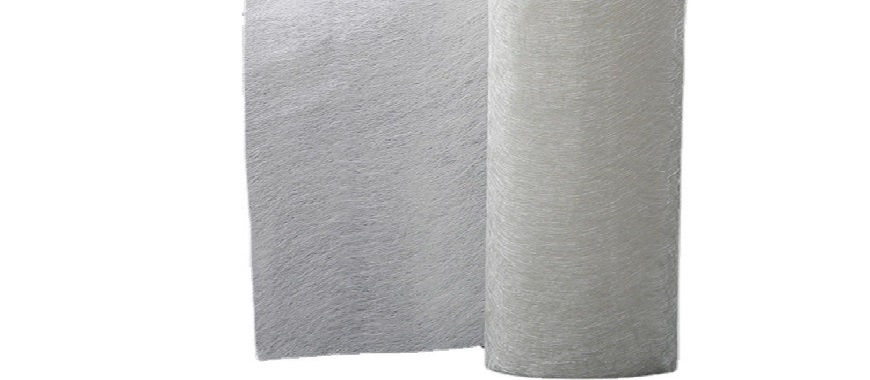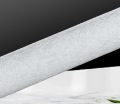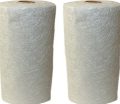
Chopped strand mat (CSM) plays a crucial role in fiberglass applications, offering strength and reinforcement. It is commonly used for building, repairing, and strengthening various surfaces like wood, metal, and composite materials. Determining how many layers of chopped strand mat are required ensures optimal durability and performance. This depends on several factors, including the material being reinforced, the desired thickness, and the specific application requirements. For effective application, understanding how to lay chopped strand mat properly is key, as it ensures the layers bond correctly and perform as intended. Choosing the appropriate number of layers can prevent structural weaknesses and ensure long-lasting results. For example, wood and epoxy may require different layering strategies compared to other materials. Understanding these factors helps achieve precise outcomes and effective use of CSM in your projects. Exploring these details simplifies the process of making informed decisions.
How Many Layers of Chopped Strand Mat
When working with fiberglass projects, understanding how many layers of chopped strand mat are needed is crucial. This section explains what chopped strand mat is, its role in construction, and the materials used. Additionally, we explore the differences between powder-bound and emulsion-bound CSM and their suitability for various applications.
What Is Chopped Strand Mat?
Chopped strand mat (CSM) is a non-woven reinforcement material made from randomly distributed fiberglass strands. These strands are bonded together with a resin-compatible binder, creating a versatile and durable sheet. CSM is often used in laminating and reinforcing projects due to its ease of application and compatibility with resins. There are different types of fiberglass chopped strand mat, including those with varying weights (e.g., 225 g/m², 300 g/m², 450 g/m²) and binders (e.g., powder-bound or emulsion-bound), each suited for specific applications. For applications where precise application and easier handling are required, chopped strand mat tape is an excellent choice, as it combines the benefits of CSM with the added convenience of a tape format, making it easier to apply to intricate areas or to secure materials during the lamination process.
Applications in Fiberglass Projects:
- Structural Reinforcement: Commonly used in boats, car panels, and industrial components.
- Repairs and Patching: Ideal for fixing damaged areas in fiberglass surfaces.
- Lamination Base: Serves as a foundational layer for multi-material laminations.
- Mold Fabrication: Used to create molds with complex shapes and curves.
Compatibility with Resins:
- Works well with polyester, vinyl ester, and epoxy resins.
- Ensures smooth bonding and structural integrity.
When determining how many layers of chopped strand mat are required, these applications and resin compatibility play a vital role in project planning.
This detailed analysis emphasizes the importance of selecting the right CSM type and number of layers to match specific project needs. By knowing the materials and their applications, users can achieve effective and lasting fiberglass reinforcements.
Detailed Insights: How Is Chop Strand Mat Specified
Factors That Determine How Many Layers of Chopped Strand Mat
Calculating how many layers of chopped strand mat are needed involves several factors, including material type, thickness requirements, and surface characteristics. These factors are critical for achieving the desired structural strength and durability. Below, we explore these considerations in detail.
How Many Layers of Chopped Strand Mat Per Square Foot?
The number of layers required per square foot depends on the thickness of each layer and the total desired thickness. Different CSM weights, such as 1 1/2 oz and 24 oz mats, influence this calculation.
Thickness Guidelines for CSM Layers:
- 1 1/2 oz Mat: Typically adds 0.040–0.050 inches per layer.
- 24 oz Mat: Contributes approximately 0.060–0.080 inches per layer.
Calculating the Number of Layers:
- For 1/4-Inch Thickness:
- About 5–6 layers of 1 1/2 oz mat are required.
- Alternatively, 3–4 layers of 24 oz mat can achieve this thickness.
- For 3/8-Inch Thickness:
- Requires 7–9 layers of 1 1/2 oz mat.
- Around 5 layers of 24 oz mat can also meet this specification.
These calculations are essential for determining how many layers of chopped strand mat should be applied for optimal results.
How Many Layers of Chopped Strand Mat on Wood?
Layering fiberglass cloth mat on wood requires careful consideration to ensure strong adhesion and structural integrity. Wood surfaces present unique challenges compared to other materials.
Recommendations for Layering on Wood:
- Preparation: Sand the wood surface to remove debris and ensure a smooth base for better adhesion.
- Layering: Begin with 2–3 layers of 1 1/2 oz mat for light reinforcement. For structural strength, 5–6 layers may be needed.
- Resin Application: Apply resin generously between layers to penetrate the wood and create a strong bond.
Ensuring Strong Adhesion and Durability:
- Use epoxy resin for better adhesion on wood compared to polyester resin.
- Consider adding woven roving between layers of CSM for added strength.
- Seal the wood completely to prevent moisture from weakening the bond.
By following these recommendations, it becomes easier to determine how many layers of chopped strand mat are necessary for wood applications.
Do You Have to Sand Between Layers of Fiberglass?
Sanding between layers of fiberglass is often required to ensure proper bonding and a smooth finish. However, this depends on the type of resin and time between applications.
Importance of Surface Preparation Between Layers:
- Uncured Layers: When layering within the resin’s curing window, sanding may not be necessary.
- Cured Layers: Sanding is essential for creating a mechanical bond between layers.
Tips for Achieving a Smooth, Seamless Finish:
- Use 80–120 grit sandpaper to roughen cured layers before applying the next one.
- Remove dust and debris after sanding to avoid defects in the finish.
- Ensure even application of resin during layering to minimize air bubbles and inconsistencies.
Proper sanding and preparation are vital for calculating how many layers of chopped strand mat are needed and ensuring a flawless outcome.
By understanding these factors and techniques, users can make informed decisions about the appropriate number of CSM layers for different projects, resulting in durable and high-quality fiberglass applications.
How Many Layers of Chopped Strand Mat:Choosing the Right Materials
Selecting appropriate materials for fiberglass projects is crucial when determining how many layers of chopped strand mat are needed. The right choice ensures durability, cost-effectiveness, and ease of application. The versatility of CSM chopped strand mat allows it to bond effectively with resin, providing a strong foundation for many projects, especially those requiring a high degree of flexibility and durability. This section focuses on the compatibility of chopped strand mat (CSM) with epoxy resin and the decision-making process between CSM Chopped Strand Mat and woven roving.
Fiberglass Mat for Epoxy Applications
Using fiberglass mat with epoxy resin requires careful planning to maximize its advantages. Although CSM is compatible with many resin types, there are specific considerations for its use with epoxy.
Best Practices for Using CSM with Epoxy Resins:
- Surface Preparation:
- Ensure surfaces are clean, dry, and free of dust for effective bonding.
- Lightly sand the base material to improve adhesion.
- Layering Technique:
- Apply resin evenly before placing each layer of CSM.
- Roll out air bubbles between layers to prevent weak spots.
- Layer Calculation:
- Determine how many layers of chopped strand mat are required based on the structural demands.
- For a 1/4-inch thickness, use around 5 layers of 1 1/2 oz mat with epoxy.
- Resin Saturation:
- Avoid oversaturating the mat, as this can weaken the final structure.
- Use enough resin to thoroughly wet out the fibers without pooling.
Advantages of Using Epoxy with CSM:
- Stronger Bond: Epoxy resin adheres better to most surfaces compared to polyester resin.
- Moisture Resistance: Provides superior water resistance, ideal for marine and outdoor applications.
- Durability: Creates a tougher, more flexible composite material that withstands stress and impact.
Limitations of Using Epoxy with CSM:
- Cost: Epoxy is generally more expensive than polyester resin.
- Work Time: Longer curing times may slow down the process for large projects.
Using these practices ensures a smooth workflow and helps accurately calculate how many layers of chopped strand mat are needed for epoxy applications.
When to Choose Chop Strand Matting Versus Woven Roving
CSM and woven roving are two common reinforcement materials, each suited to different applications. Understanding their characteristics helps determine the most effective layering strategy.
Chop Strand Matting (CSM):
- Benefits:
- Easy to conform to curves and complex shapes.
- Provides a smoother surface finish, ideal for top layers or visible areas.
- Cost-effective for general-purpose reinforcement.
- Limitations:
- Less structural strength compared to woven roving.
- Requires more layers to achieve the same thickness.
Woven Roving:
- Benefits:
- Provides higher strength-to-weight ratio than CSM.
- Reduces the number of layers required for thick laminates.
- Ideal for structural applications where durability is critical.
- Limitations:
- Less flexible, making it harder to use on intricate shapes.
- Surface finish is rougher compared to CSM.
Comparison and Use Cases:
- When to Use CSM:
- Best for non-structural layers, small repairs, and smooth finishes.
- Suitable for projects where curves and shapes need easy coverage.
- When to Use Woven Roving:
- Ideal for core structural laminates in boats, panels, and load-bearing components.
- Useful when fewer layers are desired to save time and materials.
Tips for Combining CSM and Woven Roving:
- Use CSM as a base layer for better adhesion to surfaces.
- Alternate between CSM and woven roving for a balance of flexibility and strength.
- Calculate how many layers of chopped strand mat are needed, factoring in the added strength of woven roving layers.
By understanding the specific roles of these materials, project outcomes can be optimized. Whether using epoxy with CSM or combining it with woven roving, the choice directly impacts the effectiveness of fiberglass applications.
How Chopped Strand Mat Strength Impacts Structural Integrity
Practical Guidelines for How Many Layers of Chopped Strand Mat
Understanding the correct approach to layering chopped strand mat (CSM) is essential for determining how many layers of chopped strand mat are required. These guidelines cover methods for achieving specific thicknesses and enhancing lamination quality using vacuum bagging techniques.
Achieving 1/4-Inch and 3/8-Inch Thickness
The number of CSM layers depends on the thickness requirements and the type of reinforcement materials used.
Number of Layers for Common Thicknesses:
- For 1/4-Inch Thickness:
- Approximately 5–6 layers of 1 1/2 oz mat are needed.
- Combining CSM with 24 oz woven roving may reduce the required layers to 3–4.
- For 3/8-Inch Thickness:
- About 7–9 layers of 1 1/2 oz mat can achieve this thickness.
- Using CSM and woven roving alternately can lower this number to 5–6 layers.
Tips for Combining CSM with Woven Roving:
- Enhanced Strength: Alternate layers of CSM and woven roving for improved structural integrity.
- Reduced Weight: Combining materials minimizes the total weight without compromising strength.
- Better Resin Flow: Woven roving facilitates even resin distribution, reducing voids between layers.
Advantages of Layering Techniques:
- Cost Efficiency: Reducing the number of layers saves material costs and application time.
- Versatility: Combining materials allows flexibility in meeting specific project needs.
Using these strategies, you can accurately calculate how many layers of chopped strand mat are needed while ensuring structural reliability.
Using Vacuum Bagging for Enhanced Results
Vacuum bagging is a valuable method for improving the quality of laminates. It applies even pressure, ensuring optimal resin distribution and layer bonding.
How Vacuum Bagging Improves Lamination Quality:
- Resin Efficiency: Excess resin is removed, reducing weight and improving the fiber-to-resin ratio.
- Stronger Bonding: Uniform pressure eliminates air bubbles, ensuring consistent adhesion between layers.
- Smoother Finish: Provides a smooth and uniform surface, reducing the need for additional sanding.
Layering Strategies for Vacuum Bagging:
- Initial Layering: Start with one layer of 1 1/2 oz CSM for better adhesion to the mold or base material.
- Combination Approach: Alternate between CSM and woven roving layers for balanced flexibility and strength.
- Resin Application: Apply resin to each layer before sealing the vacuum bag to prevent dry spots.
Examples of Successful Applications:
- Boat Building: Vacuum bagging ensures durable laminates for marine applications with minimal weight.
- Structural Panels: This method is often used for creating lightweight yet strong composite panels.
Considerations When Using Vacuum Bagging:
- Equipment Requirements: Requires vacuum pumps, bagging film, and sealant tape.
- Time Investment: The process may take longer than traditional layering methods.
Vacuum bagging, combined with proper material selection, enhances the precision of calculating how many layers of chopped strand mat are necessary for any project. This method is particularly valuable for high-performance applications where strength and consistency are critical.
Do You Use Chopped Strand Mat with Roving Correctly?
How Many Layers of Chopped Strand Mat”Additional Resources
At GangLong Fiberglass, we understand the importance of having the right resources when determining how many layers of chopped strand mat are required for your projects. Whether you’re new to fiberglass or looking to refine your skills, we aim to guide you with practical advice and reliable tools.
Essential Tips for First-Time Fiberglass Users
For first-time users, working with chopped strand mat can seem challenging. We’re here to help you avoid common mistakes and improve your layering techniques, which can be greatly enhanced by understanding the chopped strand mat manufacturing process. This knowledge can help you achieve better results by knowing how the material’s construction impacts its performance in different applications.
Common Mistakes to Avoid:
- Using Too Much Resin: Over-saturating the mat weakens the structure and increases weight.
- Inadequate Layering: Underestimating how many layers of chopped strand mat are needed can result in a weak or brittle structure.
- Ignoring Surface Preparation: Failing to clean and sand surfaces can lead to poor adhesion.
- Rushing Curing Times: Insufficient curing can compromise the material’s strength.
Tools and Techniques for Efficient Layering:
- Rollers: Use bubble rollers to remove air pockets and ensure even resin distribution.
- Brushes: Apply resin with brushes for precise control on intricate shapes.
- Cutting Tools: Scissors or rotary cutters help trim CSM to fit specific areas.
- Measuring Tools: Accurately measure resin and hardener ratios for optimal results.
At GangLong Fiberglass, we believe that understanding these basics ensures your project’s success while helping you determine how many layers of chopped strand mat you’ll need.
Reference Materials and Guides
Learning doesn’t stop at the workbench. We recommend diving into reliable resources to enhance your knowledge of fiberglass applications.
Books to Explore:
- “Fiberglass Techniques for Beginners”: Covers the basics of working with chopped strand mat and resin.
- “Advanced Composite Construction”: Ideal for exploring advanced layering methods and structural designs.
- “DIY Fiberglass Projects”: A practical guide filled with examples for first-time DIYers.
Online Resources:
- Video Tutorials: Watch step-by-step guides for determining how many layers of chopped strand mat are required.
- Forums and Communities: Join discussions where enthusiasts and professionals share tips and insights.
- Calculation Tools: Use online calculators to estimate material requirements for your projects.
At GangLong Fiberglass, we’re committed to supporting your learning journey. By leveraging these resources, you’ll not only master the process of working with CSM but also feel confident in assessing how many layers of chopped strand mat are needed for every project.
FAQs about How Many Layers of Chopped Strand Mat
The number of chopped strand mat (CSM) layers depends on the thickness required and the project’s structural needs. For example, achieving a 1/4-inch thickness typically requires 5–6 layers of 1 1/2 oz CSM. For a 3/8-inch thickness, around 7–9 layers may be necessary. If combined with woven roving, fewer layers of CSM may be needed, reducing the total material usage. Always calculate the required layers based on specific project requirements, material properties, and resin compatibility.
Chopped strand mat thickness varies depending on its weight. A single layer of 1 1/2 oz CSM adds approximately 0.040–0.050 inches. Heavier mats, like 24 oz, contribute around 0.060–0.080 inches per layer. The combined thickness depends on the number of layers applied and the amount of resin used. This versatility makes CSM suitable for a wide range of applications, from lightweight reinforcement to heavy-duty laminates.
The required layers of fiberglass mat depend on the desired strength and thickness of the finished structure. For light-duty applications, 2–3 layers of CSM may suffice. For structural reinforcement, 5–6 layers or more are often needed. When combining CSM with other materials like woven roving, the number of layers required may decrease, providing additional strength without adding excessive weight. Always tailor the layering to the project’s specific needs.
The number of carbon fiber layers in a laminate depends on its design and intended use. For lightweight components, 2–3 layers are common. For structural elements, laminates may contain 5–10 layers or more. Carbon fiber provides exceptional strength-to-weight ratio, allowing fewer layers compared to fiberglass for the same level of performance. Consider project requirements, such as load-bearing capacity and impact resistance, to determine the appropriate number of layers.

As the editor of GangLong Fiberglass, I have years of experience and in-depth research, focusing on cable tray products, fiberglass solutions, and grille systems. I incorporate years of industry insights and practical experience into every content, committed to promoting the progress of the industry. At GangLong Fiberglass, my commitment is reflected in every product, from innovative cable trays to durable fiberglass solutions and sturdy grille systems. As an authoritative voice in the industry, my goal is to provide valuable information to professionals and businesses and promote forward-looking solutions.


